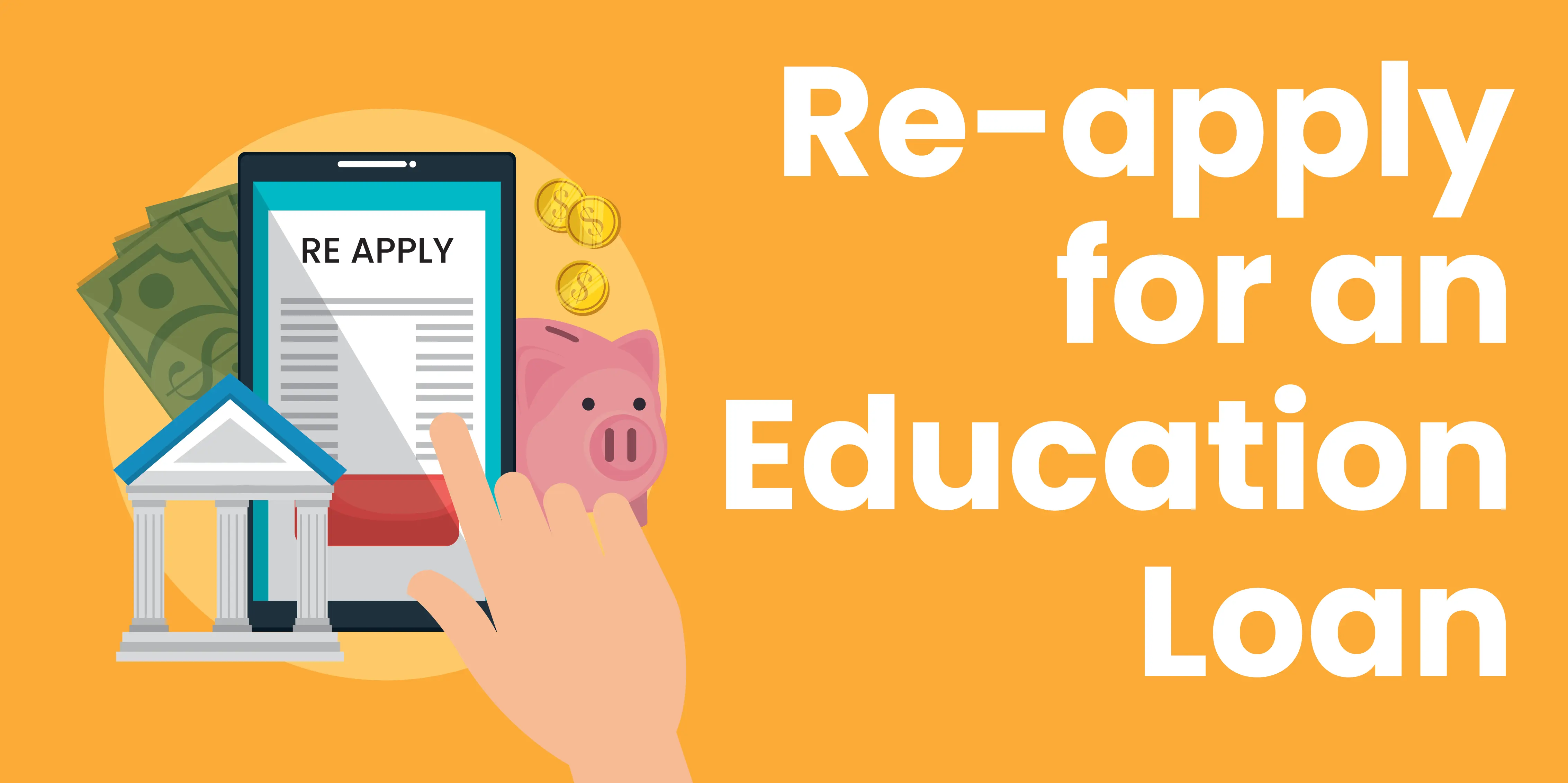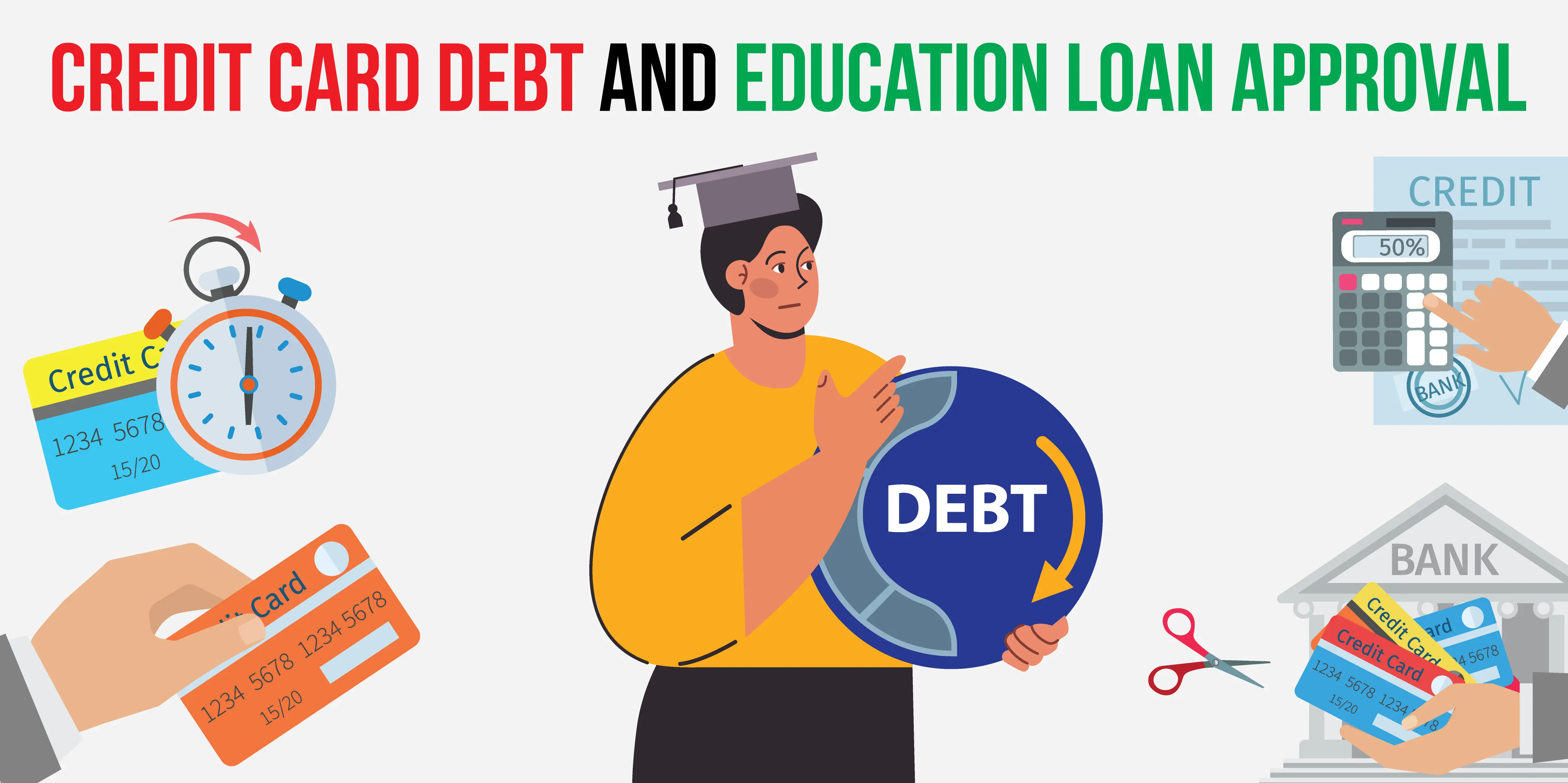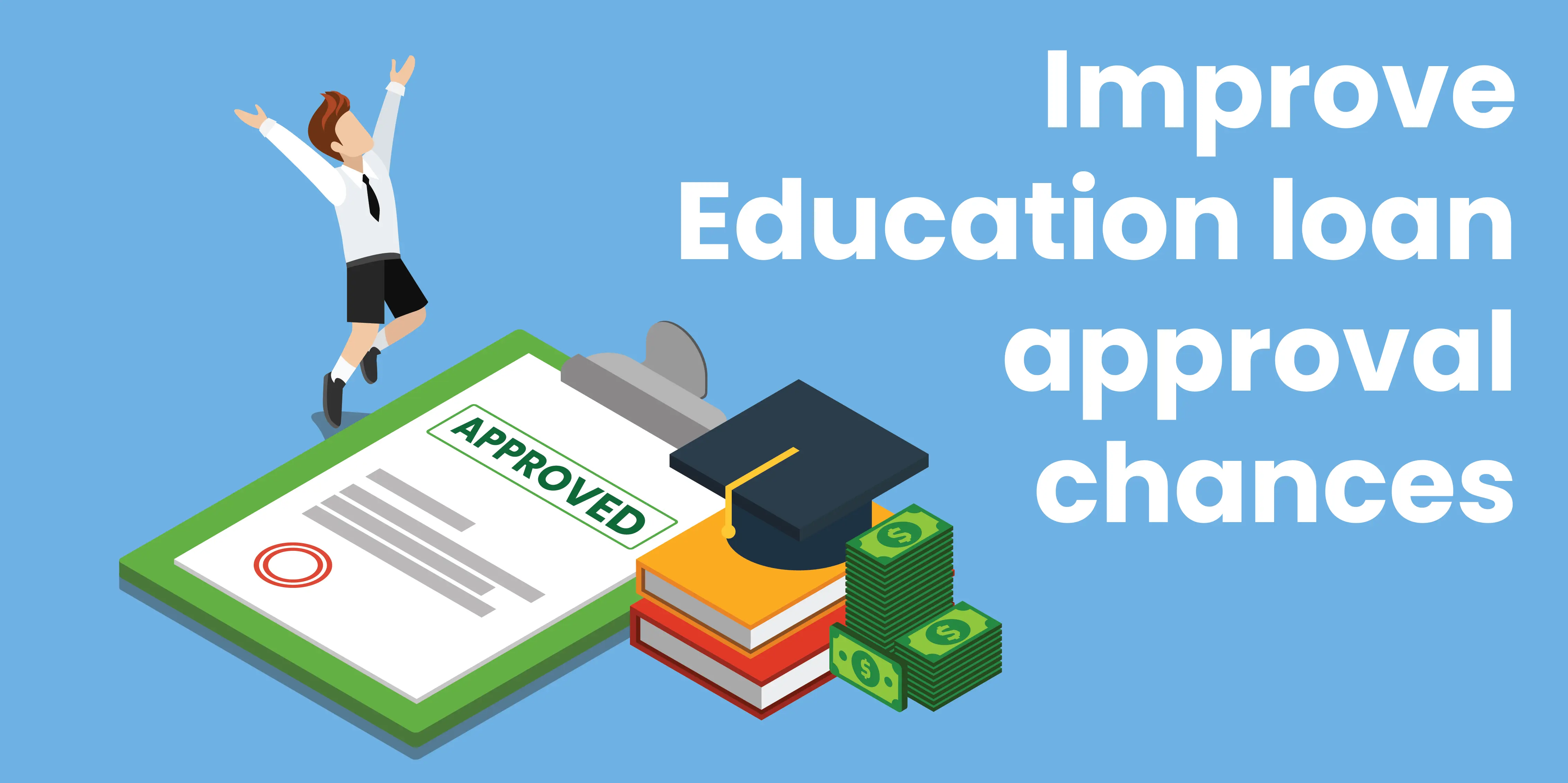https://www.wemakescholars.com/blog/reapply-for-an-education-loan
How and When to Re-Apply for an Education Loan
Abroad Education Loan | Updated ()

Often, students think education loan rejection is a setback for their academic dreams. But that's not true. Here's why? There may be many reasons for education loan rejections, from a low CIBIL score to missing documents. But the good news is that these could be fixed, and students can reapply for education loans.
In this blog, we will explore in what situations we can reapply for education loans and how to do it. Along with this, we will also discuss the reasons for loan rejection and how to strengthen students' profiles to reapply for an education loan.
Common Reasons For Loan Rejection
An education loan rejection can be disappointing, especially when you have strong academic goals. But a loan rejection doesn't mean the end. It could simply be a sign to re-assess or reapply with a strong profile. Let us identify the common reasons for an Education loan rejection, and then we will discuss when to reapply.
Rejection Due to Ineligible Course/Country
- Lenders have a specific list of universities, recognised courses, and some top countries that they are favourable for offering education loans.
- If the university and the course that the student chooses don’t fall under this list, then there is a chance that lenders may reject your loan.
- This is to ensure the academic credibility and the employment opportunities that the university and the course have, which potentially affect the repayment capacity of the student. This is a risk to the lender to offer an education loan.
Read: Bank Rules for STEM vs Non-STEM Education Loans Explained
Rejection Due to Weak Co-Applicant Profile
- A co-applicant is mandatory for most of the education loans. Especially if the student wants a higher amount, a strong co-applicant with a stable income and a good credit score is important.
- This is to ensure the repayment of the education loan if the student doesn’t.
- A strong co-applicant strengthens the student profile, thus enhancing the loan approval chances.
- Lenders meticulously assess every detail of the co-applicant, including any financial obligations they have.
- Co-applicant income failing to meet the lender's financial requirement leads to the rejection of the education loan.
Rejection Due to FOIR Criteria
- This is one of the primary factors that lenders assess before offering education loans.
- FOIR(Financial Obligations to Income Ratio) is checked to confirm the repayment capacity of the borrower.
- It reflects what part of the monthly income is already committed to the existing financial obligations, such as EMIs, rents, credit card dues, any loans, etc.
- The basic FOIR must be 40% above this, which can make the applicant or co-applicant ineligible for any additional loans.
- This is one of the reasons why many loans get rejected.
A Poor CIBIL Score or Credit History
- One of the most common reasons for loan rejection is a poor CIBIL score.
- A poor credit history of the applicant or co-applicant can lower the chances of securing an education loan.
- Lenders check this before issuing an education loan to assess the creditworthiness and the repayment behaviour of the applicant.
- A CIBIL score above 650 is considered to be decent enough for an education loan; below that range is considered risky by the lenders.
- Loan defaults, credit card overdues can significantly affect the CIBIL score, leading to loan rejection.
Incomplete or Inaccurate Documentation
- Education loans involve a lot of paperwork.
- Lenders evaluate each document to assess the eligibility of the applicant and co-applicant.
- Even a small error in the document can lead to an education loan delay or rejection.
- Especially when students are opting for collateral loans, lenders prefer updated documents.
- Oftentimes, students submit outdated documents, potentially leading to loan rejection.
- It is important to ensure all the documents, including academics, are accurate and filled out.
When to Reapply for an Education Loan
You can consider reapplying for an education loan after...
After Admission is Confirmed
- Check with the lenders whether the university you applied to is on the lenders' list of universities or not.
- Try with the other lenders, opting for other countries if they can offer an education loan.
- Consider reapplying with private lenders and NBFCs, or international lenders with whom the terms are flexible.
- Ultimately, choose the university and course that is on the lender's list from the top country.
Once you are sure about your academic program, you can immediately reapply with the updated details if applicable.
After Getting a Strong Co-Applicant
- Add another co-applicant with a stable income source, along with the primary co-applicant(eg, any other family member).
- Show lenders an extra source of income, such as rentals, business earnings, pension, etc.
- Choose secured loans by pledging collateral. This gives lenders the confidence that the loan amount is secured.
- Choose lenders that are flexible with the co-applicant's income terms.
Reapply immediately once you get a strong co-applicant who meets the lender's financial requirements.
After Meeting FOIR Norms
- Add a co-applicant with better FOIR and fewer financial commitments.
- Close the possible small loans; this increases the CIBIL score as well.
- If possible, opt for collateral loans for which FOIR norms are flexible.
Once the applicant or co-applicant has a better FOIR, ideally 40% or below, students can immediately reapply for the education loan.
After Improving Your Credit Score
- Check your credit report if there are any errors and raise a dispute if needed.
- Clear outstanding credit overdues or EMIs.
- If the co-applicant's credit score is low, try to add another co-applicant to strengthen the student's profile.
- Once the credit score improves, the students can immediately reapply, which may usually take 3-6 months.
After Sourcing all the Valid Documents
- Visit the lender's official website to get the checklist of documents.
- Follow the instructions and organize all the necessary documents as required by the lenders.
- Visit WeMakeScholars and request a callback to know the required documents checklist.
Once all the documents are arranged and verified, the student can reapply immediately for an education loan.
How to Reapply for an Education Loan
Below are the steps to be followed to reapply for an education loan.
- Step 1: Review the Rejection Letter
- Go through the rejection letter if you are reapplying after a rejection.
- Understand the reasons for loan rejection when reapplying for an education loan.
- Step 2: Identify the Issues
- Rectify the issues and fix them.
- Gather complete documents.
- Improve credit scores.
- Apply to the listed universities.
- Step 3: Choose the Right Lender
- If there are no issues with the current lender, confidently proceed. Otherwise, choose the other lender.
- Compare all the available lenders with interest rates, repayment terms, and other flexibilities.
- Step 4: Prepare a Strong Application
- After fixing all the issues, apply it strongly this time.
- With a strong co-applicant.
- With all the necessary eligibility requirements as requested by the lender.
- Step 5: Reapply Online or Offline
- Visit the branch and apply or
- Visit WeMakeScholars and request a callback, and everything will be done.
Conclusion
Facing an education loan rejection can be discouraging, but that's not the end of the road. Whatever the reason may be for loan rejection, you can always reapply and achieve your academic goals. In this blog, we have explored when to reapply for an education loan and how to do it.
When you apply for an education loan through us, our experienced team will help you find the most suitable loan for your higher studies. Request a callback today to contact our team.




Kindly login to comment and ask your questions about Scholarships & Education Loans